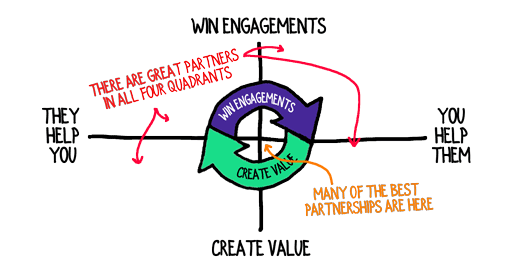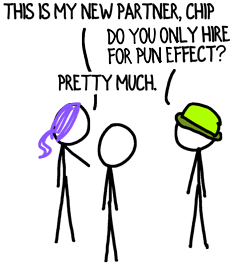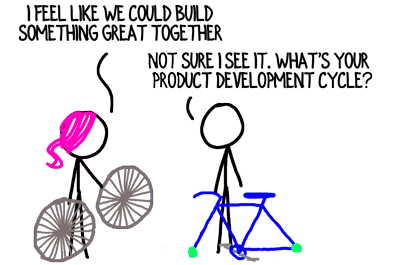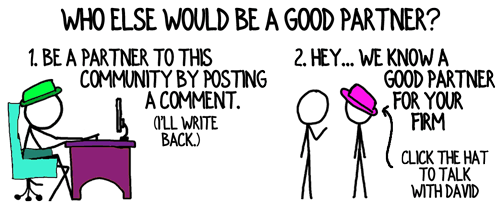Many of your consulting firm’s prospects are caught in the eddies of crisis and battling to stay afloat. While they appreciate your relationship-building calls, unfortunately, they’re too preoccupied to fully engage in deep conversations with you.
On the other hand, you know who’s in the same boat as your consulting firm and casting about for new ideas and connections?
Fly
fishermen. Partners.
Plus, the right partner can contribute more to your consulting firm’s health over the long term than any one client.
A partner is any individual or firm that helps you with your consulting cycle (Winning Engagements and Profitably Creating Value), and/or whom you can help.**

Two examples of partnerships illustrate their value:
- A Connecticut-based consulting firm has a profitable, symbiotic relationship with a recruiting firm. The consulting firm’s work often includes organizational design (which leads to recruiting requirements). The recruiting firm strongly recommends the consulting firm to the executives it places. Each firm only helps the other when it’s in the best interest of the client, of course.
- A Washington-based consulting firm helps its industrial clients derive richer insights from research data. They partnered with a research provider, who now views them as a “secret weapon” to win competitive business. Unsurprisingly, the research provider has become the consulting firm’s favorite source of leads.

The five categories (and examples) of partners below are thought starters for your consulting firm.
5 Types of Consulting Firm Partners
IP Creators
Folks who can help your consulting firm fashion powerful, compelling IP, whose ideas mesh neatly with your firm’s, or who can bring your consulting firm’s models, frameworks and approaches to life.
Similarly, this category includes folks whose IP your consulting firm could build upon.
Examples include professors, industry leaders, inventors, technicians, programmers, developers, integrators and other consulting firms.

Influencers
Individuals who can raise your consulting firm’s credibility and reputation. Conversely, providers whose fortunes you could influence.
Often we think of influencers inside an organization (e.g., the level below decision makers). External influencers wield far more power.
Consider authors, speakers, bloggers, podcasters, vloggers, YouTubers, journalists, and frequently-cited experts.
Connectors
Any individuals, firms or organizations whose target and/or tribe overlaps with yours are potential connectors. They can introduce your consulting firm to a slew of new prospective clients, and you can do the same for them.
Salespeople, promotional companies, agencies, community organizers, group leaders, list providers, and public figures exemplify this type of partner.
Value Extenders
Providers of any ilk that have the power to make your consulting firm’s offering better, stickier, longer lasting, higher value, sexier, or more broadly applicable.
Of course, the same applies in reverse. Whose offerings could you enhance?
For instance, headhunters, data providers, software developers, implementers, dashboarders, storytellers, and productizers.

Distributors
The final category or partners includes firms and individuals who can broadcast your message, or whose message you could help to spread.
Representatives of this category include conferences and conference hosts, panel moderators, trade associations, publishers, event organizers, and tribe owners.
I bet that in less than 30 seconds you can identify at least one, high-potential partner for your consulting firm. (Share your idea, with or without specifics, below.)
With two minutes of thought powered by a Passover macaroon, a chocolate Easter egg or non-denominational treat of your choice, you can identify at least one specific, potential partner in each category.
Reach out to each of them over the next couple of days and your consulting firm is virtually guaranteed to launch multiple energizing, exciting, profitable new initiatives.
What other partnerships do you think would be valuable now?
Text and images are © 2024 David A. Fields, all rights reserved.

 David A. Fields Consulting Group
David A. Fields Consulting Group 

Great ideas here David.
My firm is focused on helping mission-driven orgs create content with purpose to gain traction with the right audiences. Here’s some things happening across your four categories to further my opportunities during this time:
Influencers: One offering my firm does is manage and host online conferences. So I am putting on a 3-day online summit event for ourself with several influencers (25+) in our niche. Each are starting to promote the event to their audience. I am serving as co-host of the event, and inevitably will have broad exposure to new (each of their) audience segments. And at the same time providing each more exposure across other people’s networks.
Connectors: I am proving access to my platform / network by becoming the connector for them. I am building a resources directory of tangential, non-competitive partners and presenting that list to my audience. Referral / affiliate fee relationships are baked in to many on the list so I could benefit in the short/mid term financially marginally. But this will demonstrate my relevance to my audience by showing them I am worth more than just the category / topic of my focused offering. That I could be seen more more broadly as their go-to advisor as a first call due to my reach across all of their needs. Each partner listed will gain incremental trust with my audience because their association and implied recommendation by being on the list.
Distributors: I have been offering brainstorming/sounding board sessions to a couple of conference organizer and industry associations on how to use their resources and existing audience to demonstrate relevance now when they typically don’t have to (they usually can just wait until the next conference event needs promotion) since offline events are dead for the foreseeable period of time. The conference group benefits from being able to add immediate pivoting activities. Partnering formally on a co-branded project will increase my visibility while building trust with the audience through association.
Value extenders: I am crowd-sourcing resources from various partners to produce a comprehensive resource bundle regarding what I believe is the one big common concern my audience will have to deal with after getting through this crisis available to our target for free. Partnering to beef up any offering that I would be able to produce alone exponentially increases the value of the call to action to the target audience to engage. The packaging of pooled resources works to increase my authority in the eyes of people who will consume the resources. And each contributing partner will benefit the same way in front of their own existing audience.
Thanks for this framework to think through my immediate initiatives and activities. It has been a good exercise to try and meeting the objectives you outlined while ensuring I meet my own IP framework.
What an amazing case study of partnering, Kenny! You’ve demonstrated many times over how to provide value to partners and receive value too. Congratulations on being a leader in your community and organizing outstanding responses to your current situation.
A great illustration of the partners idea, Kenny, and I’m very glad you shared your experience.
I do think one key to having success with your awesome list above is to figure out how you can benefit others first using those four lenses first and then adjust to see how to benefit from it as well. There definitely is a sweet spot in almost every scenario where you can do both, right? I think if any consultant feels the pinch with clients pulling back it is easy to feel like you must scramble and eek out any and all self-serving opportunities right now. But having the generosity angle lead will reward you in the end. Hope you agree!
Totally agree, Kenny. We will always be successful staying Right-Side Up. That applies to partners as well as prospects and clients. The more we keep their success at the center of our intention, the easier it will be to attract and create meaningful partnerships.
Thank you for highlighting that point, Kenny.
Yes to value extending! I am currently working on an offering to partner with sales and customer experience consultants to integrate contracts (I am a lawyer) in their offerings to deliver more valuable results for their clients. Contracts are often an afterthought, but they are an important part of many touch points along the customer journey, from proposal to delivery to data security to renewal and beyond. Done right, the contract process reduces risk and uncertainty through transparency and by setting clear expectations.
Woo hoo on smart contracting! You’re right that contracts are often an afterthought and they shouldn’t be. (That’s why two chapters of my first book were devoted to risk management through smart trades and contracting with consulting firms.)
Great example of building partnerships with consulting firms, Erin. Thank you for showing the perspective from “the other side.”
Great article and suggestions….. I always look forward to your thoughts and suggestions.
Thanks, Kevin. I equally appreciate you voicing your support! Please let me know how you fare with your partnership efforts.
Hi David – Excellent article. I use something similar when I am collaborating or partnering with people. Thank you posting your thoughts.
Good for you for having a partnering framework, Aviraj. That shows you’re already ahead of the game! I appreciate you offering your thoughts here too.
Thank you for the article David and I enjoy the humor as well. Are you familiar with the Collaborative Business Relationships Framework (ISO-44001)? I am a member of the US Technical Advisory Committee (TAG) and we are crafting a simpler version for small business (ISO-44003). Would you be willing to share your thoughts on the WIP version? Either way, thank you.
Wait, there was humor?! I’m not familiar with all the different ISO frameworks; however, I’d be happy to weigh in on a small business guideline. (Presumably, it revolves around the three stanchions of small business: espresso beans, cacao and dates.)
Thanks for connecting the dots between the article and what you’re working on, Greg. I’ll look for an email from you.